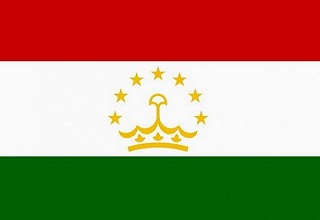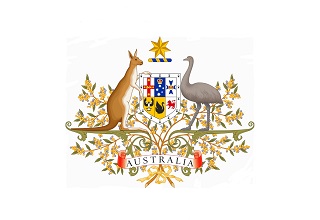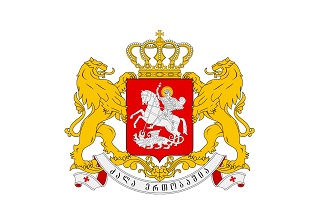Regarding the Inspection and Quarantine Requirements for Fresh Durian from Malaysia to China
1. Inspection and quarantine basis
(I) "Biosafety Law of the People's Republic of China";
(II) "Law of the People's Republic of China on Entry and Exit Animal and Plant Quarantine" and its implementing regulations;
(III) "Food Safety Law of the People's Republic of China" and its implementing regulations;
(IV) "Regulations on Supervision and Administration of Inspection and Quarantine of Imported Fruits";
(V) "Protocol on Plant Quarantine Requirements for the Export of Fresh Durian from Malaysia to China between China Customs and the Ministry of Agriculture and Food Security of Malaysia".
2. Names of commodities allowed for entry
Fresh durian, scientific name Durio zibethinus Murr., English name Durian.
3. Permitted origin
Malaysian durian producing areas.
4. Approved orchards and packaging plants
Orchards and packaging plants for exporting durian to China must be reviewed and filed by the Ministry of Agriculture and Food Security of Malaysia and approved for registration by China Customs. Registration information includes name, address and registration number, so as to accurately trace the source when the exported goods do not comply with the provisions of this announcement. Before the export season each year, the Ministry of Agriculture and Food Security of Malaysia shall provide the list of enterprises to the Chinese Customs, which shall be published on the website after approval and registration by the Chinese Customs.
5. List of quarantine pests of concern to the Chinese Customs
(1) Dysmicoccus neobrevipes
(2) Planococcus minor
(3) Planococcus lilacinus
(4) Icerya pulchra
(5) Mudaria luteileprosa
(6) Rastrococcus iceryoides
(7) Albonectria rigidiuscula
6. Pre-export management
(I) Orchard management.
1. Durian orchards exported to China should establish a sound quality management system and traceability system under the supervision of the Ministry of Agriculture and Food Security of Malaysia, implement good agricultural practices (GAP), maintain sanitary conditions in the orchard, such as no pollution sources that affect fruit production in the surrounding area, and timely clean up bad and rotten fruits; and implement integrated pest management (IPM), including regular pest monitoring surveys, physical, chemical or biological control of pests, and agricultural operations and other control measures.
2. The Ministry of Agriculture and Food Security of Malaysia should formulate a management plan for quarantine pests of concern to Chinese Customs in accordance with the requirements of the International Standard for Phytosanitary Measures No. 6 (ISPM 6) and organize and implement orchard monitoring. If pests or their corresponding symptoms are found during monitoring, comprehensive management measures including chemical, physical or biological control should be taken to ensure that Malaysian durian does not carry quarantine pests of concern to Chinese Customs.
3. For scale insects such as the new pineapple gray mealybug, the ocean hip-patterned mealybug, the South China hip-patterned mealybug, the holly cottony mealybug, and the cottony mealybug, the orchards in Shuhua should conduct pest monitoring every 15 days from the flowering period to the harvest period to check whether there are scale insects on the fruits, stems, branches and leaves. In addition to visual inspections, a variety of physical or chemical methods should be used to monitor pests on branches and stems, and effective prevention and control should be carried out once found.
4. For the durian fruit borer, the orchards in Shuhua should conduct regular monitoring throughout the growing season, focusing on checking whether there are insect holes on the surface of the fruit. If there are insect holes, the fruit should be dissected in time to check for eggs, larvae and damage. In addition, it is necessary to use light traps and sex pheromone traps in the orchard to monitor pests. Once the durian fruit borer is found, appropriate physical, chemical or biological control measures should be taken immediately to eradicate it.
5. For the cocoa flower gall pathogen, orchards exported to China should conduct regular monitoring and prevention during the growing season, and implement appropriate farm cultivation and cultivation techniques to prevent the occurrence of the pathogen. Prevention and control measures should also be taken before harvest, or fungicides should be sprayed for prevention and control.
6. Pest monitoring and prevention should be carried out under the guidance of professional technicians. Technicians should receive training from the Ministry of Agriculture and Food Security of Malaysia or its authorized agencies.
7. All registered orchards should keep records of pest monitoring and prevention and provide them to the Chinese Customs when necessary. The prevention and control records should include information such as the name, active ingredients, dosage and time of the chemical agents used during the growing season.
(II) Packaging plant management.
1. The processing, packaging, storage and shipping of durian exported to China must be carried out under the quarantine supervision of the Ministry of Agriculture and Food Security of Malaysia or its authorized officials.
2. The packaging plant for durian exported to China should be clean and hygienic, the ground should be hardened, and there should be a raw material field and finished product warehouse.
3. The storage, processing, handling, and storage areas of durian exported to China should be relatively independent and reasonably laid out, and should be isolated from the living area and have an appropriate distance.
4. If packaged durian needs to be stored, it should be immediately put into storage and stored separately to avoid reinfection by pests.
5. The packaging factory should establish a traceability system to ensure that durian exported to China can be traced back to the registered orchard. The registration information should include the processing and packaging date, the name of the source orchard or its registration number, the quantity, the export date, the export quantity, the country to which it is exported, the container number, etc.
(III) Packaging requirements.
1. The packaging materials should be clean and unused, and comply with China's relevant plant quarantine and hygiene requirements. If wooden packaging is used, it must comply with the requirements of International Standard for Phytosanitary Measures No. 15 (ISPM 15).
2. During the packaging process, durians exported to China should be manually selected, graded and cleaned to remove diseased, worm-eaten, rotten, deformed fruits, branches and leaves or other plant residues and soil, and the surface of the fruit should be cleaned by effective measures such as blowing and brushing with a high-pressure air gun or water gun. If necessary, the surface of the durian can be manually wiped with a soft and clean cotton cloth to effectively remove scale insects, eggs, pathogenic spores, etc. attached to the surface of the fruit. In addition, if necessary, pest control should be carried out in the packaging plant.
3. Each packaging box must be marked in Chinese or English with information such as fruit type, variety, country, place of origin, registered orchard name or its registration number, and packaging plant name or its registration number. Each packaging box and pallet must be marked in Chinese or English with "输往中华人民共和国" or "Exported to the People's Republic of China".
4. Containers containing durians exported to China must be checked for good sanitary conditions when they are packed. The containers should be sealed and the seals should be intact when they arrive at the Chinese entry port.
(IV) Pre-export inspection and quarantine.
1. The Ministry of Agriculture and Food Security of Malaysia or its authorized agencies shall sample and inspect 2% of each batch of durians exported to China. If no plant quarantine problems occur within two years, the sampling rate will be reduced to 1%.
2. If quarantine pests, branches, leaves or soil of concern to the Chinese Customs are found, the entire batch of goods shall not be exported to China, and the export of durians from the relevant orchards and packaging plants to China shall be suspended as appropriate. The Ministry of Agriculture and Food Security of Malaysia shall find out the reasons and take corrective measures. At the same time, the Ministry of Agriculture and Food Security of Malaysia shall keep records of seizures and provide them to the Chinese Customs upon request.
(V) Requirements for plant quarantine certificates.
For the goods that have passed the quarantine, the Ministry of Agriculture and Food Security of Malaysia shall issue a plant quarantine certificate, indicating the name or registration number of the orchard and packaging plant, and fill in the following additional statement: "This consignment complies with the requirements specified in the Protocol of Phytosanitary Requirements for Export of Fresh Durian Fruits from Malaysia to China, and is free from quarantine pests of concern to China." Before the formal start of trade, the Ministry of Agriculture and Food Security of Malaysia shall provide a sample of the plant quarantine certificate to the Chinese Customs for confirmation and filing.
7. Entry inspection and quarantine and handling of unqualified products
When the durians exported to China arrive at the Chinese entry port, the Chinese Customs shall implement inspection and quarantine in accordance with the following requirements.
(I) Verification of relevant certificates and labels.
1. Verify whether the imported durian has obtained the "Entry Animal and Plant Quarantine Permit".
2. Verify whether the plant quarantine certificate complies with the provisions of Article 6, paragraph (V) of this Announcement.
3. Verify whether the labels on the packaging boxes and pallets comply with the provisions of Article 6, paragraph (3) of this Announcement.
(II) Entry inspection and quarantine.
1. Durians exported to China should enter the country from ports where Chinese customs allows the import of fruits.
2. Inspection and quarantine of imported durians shall be carried out in accordance with relevant laws, administrative regulations, rules, etc., and those that pass the inspection and quarantine shall be allowed to enter the country.
(III) Disqualified treatment.
1. If it is found that the goods come from orchards or packaging plants that are not approved by Chinese customs, the batch of goods shall not be allowed to enter the country.
2. If quarantine pests of concern to Chinese customs or other newly occurring quarantine pests are found, or soil, plant residues, etc. are found, the batch of goods shall be returned, destroyed or pest-free.
3. If it is found that the goods do not meet the national food safety standards of China, the batch of goods shall be returned or destroyed.
4. If the above non-compliance is found, Chinese Customs will notify the Ministry of Agriculture and Food Security of Malaysia and suspend the import of durians from the relevant orchards and packaging plants for the rest of this export season as appropriate. The Ministry of Agriculture and Food Security of Malaysia should find out the reasons and urge the relevant orchards and packaging plants to make rectifications until the relevant rectification measures are effectively implemented and recognized by Chinese Customs.
GACC
June 24, 2024




